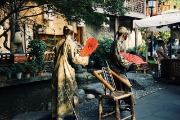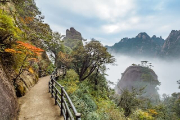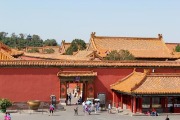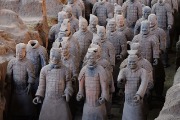Mount Tai (Taishan Mountain)
It’s the top of China’s Five Sacred Mountains, with endless stairs to climb.
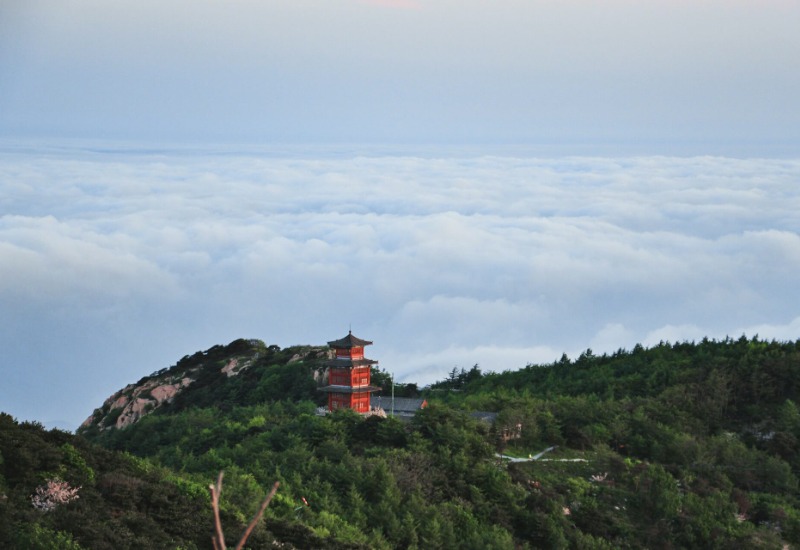
Climbing Mount Tai (Taishan Mountain) is all about one thing: stairs, stairs, and more stairs. From the starting point at Hongmen Palace to the summit at the Jade Emperor Peak, there are about 6,366 steps. That’s pretty much the main event of your Mount Tai China journey. But of course, as the top of China’s Five Great Mountains, you’ll also get to enjoy stunning natural scenery and cultural sites along the way. You can explore and take it all in as you climb.
Most other travel articles only highlight a few spots on Taishan Mountain. But unlike them, we’ll take you through all the key landmarks along the hike, plus nearby attractions worth checking out. We’ll also share info on exciting performances and events. And at the end, we’ve got some Q&A and ticket info about Tai Mount.
Table of Contents
Main Attractions of Mount Tai
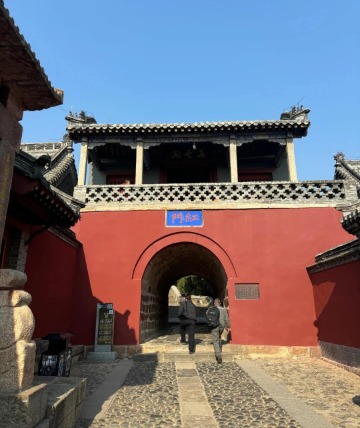
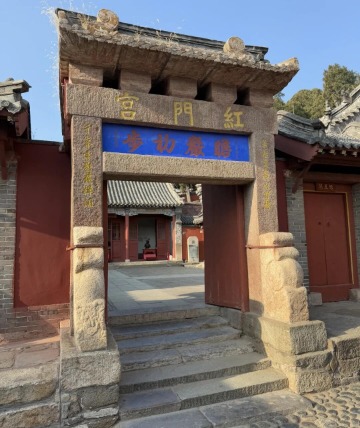
Hongmen Palace (红门宫)
Hongmen is the most popular starting point for hikers on Mount Tai China. As a mountain with deep connections to Confucianism, Buddhism, and Taoism, Mount Tai’s rich cultural heritage really shines through in the Hongmen Palace complex. (We’ve included more details on the connection between Tai Shan Mount and the “Three Teachings” in the FAQ section at the end of this article.)
The palace is divided into two parts: the East and West Courtyards. In the East Courtyard, you’ll find statues of Maitreya Buddha and the Nine Lotus Bodhisattvas. Visitors often pray here for wisdom, compassion, and good fortune. In the West Courtyard, the main deity is Bixia Yuanjun, a Taoist goddess who is one of Tai Mount’s protectors. Known for her kindness, she watches over the mountain and its people.
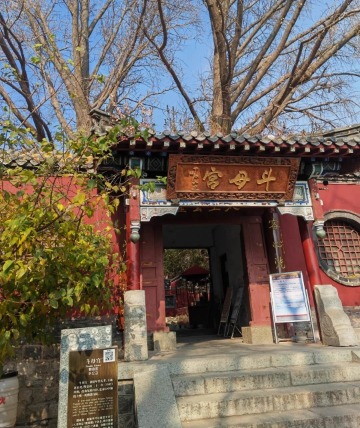
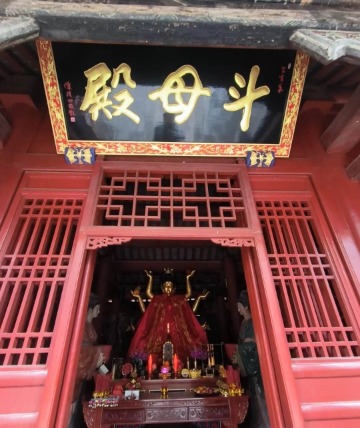
Doumu Palace (斗母宫)
After leaving Hongmen, your next stop is Doumu Palace, one of the oldest Taoist temples on Taishan Mountain. This temple is dedicated to Doumu Yuanjun, the mother of the Big Dipper stars, and a highly revered figure in Taoism. Across China, many Taoist temples have shrines dedicated to her.
What does Doumu Yuanjun represent? In Taoism, she is seen as a supreme goddess who can eliminate disasters, remove obstacles, and protect lives. Many Taoist temples feature statues of her, and worshippers pray for peace and blessings through offerings.
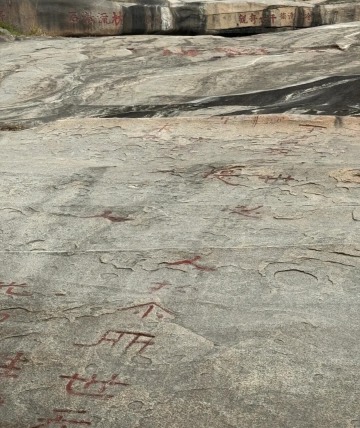
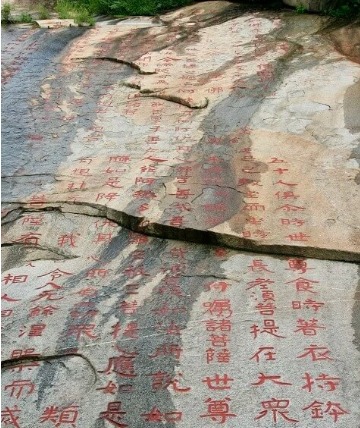
Scripture-Carving Gorge (经石峪)
Climbing up past Doumu Palace, you’ll reach Scripture-Carving Gorge, or Scripture-Carving Gorge. Here, you’ll find the Diamond Sutra carved into the rocks. It’s the largest Buddhist scripture carving still existing in China, covering an area of 2,064 square meters. The calligraphy style used is a mix of clerical and regular scripts, making it a real artistic treasure. If you’re into Chinese calligraphy, this is the perfect place to get a close look at these ancient engravings.
The Diamond Sutra holds a very special place in Buddhism. It’s considered a key guide for spiritual practice. Written in ancient India around 994 BCE, this text has had a huge impact on the spread of Buddhism, especially in China, Japan, and Korea. Over the centuries, many Chinese scholars and poets have copied, annotated, and recited the Diamond Sutra, leaving behind a rich collection of calligraphy and poetry.
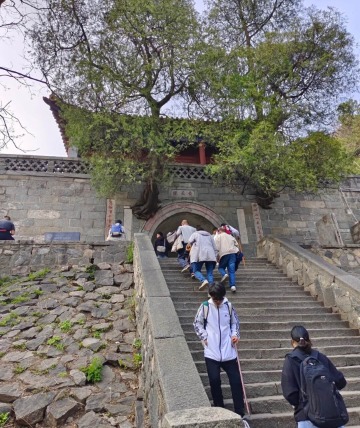
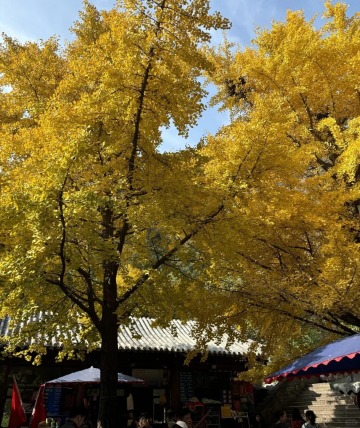
Hutian Pavilion (壶天阁)
Hutian Pavilion is a Taoist building and a key stop on your way up Mount Tai. It’s a popular spot for hikers to take a break and recharge before continuing their climb. In the fall, you can enjoy some local tea here and admire the ginkgo trees as they turn golden yellow.
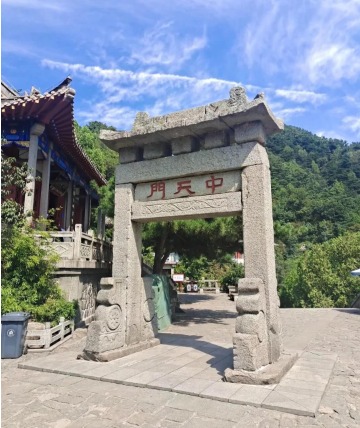
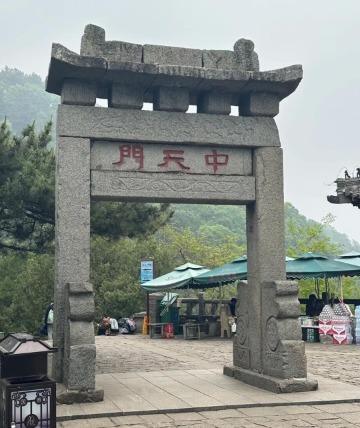
Zhongtian Gate (中天门)
After passing Hutian Pavilion, you’ll reach Zhongtian Gate, located halfway up Taishan Mountain at an elevation of 847 meters. Built during the Qing Dynasty, it’s an ancient and majestic stone archway. Around the gate, you’ll find traditional-style tea houses, hotels, and a cable car station, offering a variety of services and facilities.
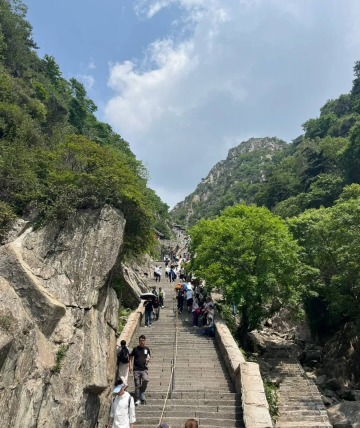
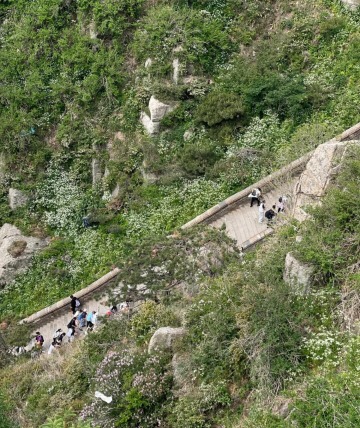
Eighteen Bends (十八盘)
The Eighteen Bends is the toughest part of the climb up Mount Tai China, with 1,633 stone steps. The average slope here is nearly 45 degrees, and in some sections, it’s as steep as 70 to 80 degrees. On both sides, towering cliffs create a feeling of being on the edge. In ancient China, the Eighteen Bends was seen as a “ladder to heaven,” symbolizing the connection between the mortal world and the divine, and it reflects the reverence past dynasties had for Tai Mount.
Why is it called the “Eighteen Bends” and not some other number? In ancient China, the number 9 was considered the highest single-digit number, and two 9s together symbolized “a lot.” So, “Eighteen Bends” really just means “a ton of steps.”
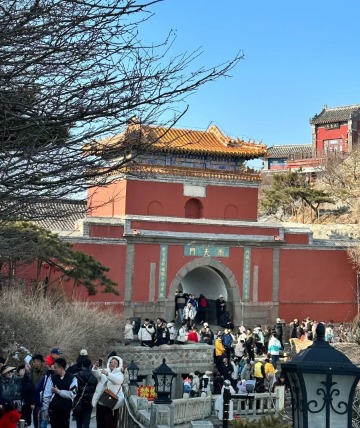

Nantian Gate (南天门)
Nantian Gate is at the end of the Eighteen Bends. From here, you can look out over all of Tai Mountain and take in the stunning natural scenery. In Chinese culture, Nantian Gate is seen as the gateway to the heavens, and you’ll often spot it in Chinese mythology, TV shows, and novels.
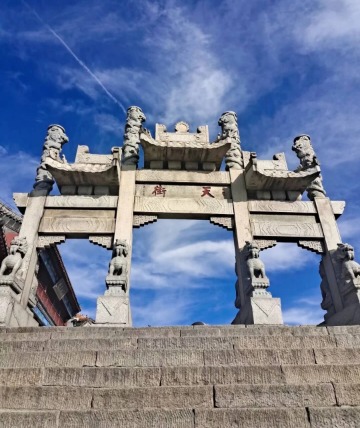
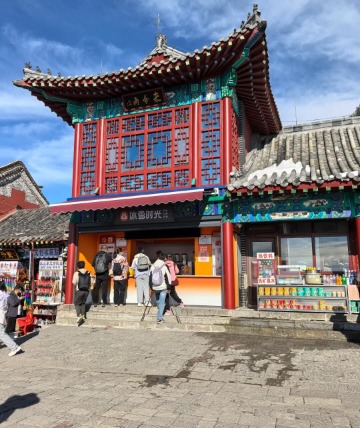
Heavenly Street (天街)
Heavenly Street is right next to Nantian Gate. It’s a bustling street that combines shopping, dining, and entertainment. Here, you can pick up local specialties like Tai Shan tea, red dates, and other Shandong products. Heavenly Street is also a hub for traditional crafts, where you can watch artisans create Tai Shan paper-cutting and embroidered balls, among other handmade treasures.
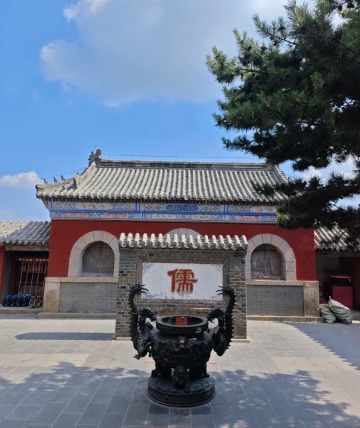
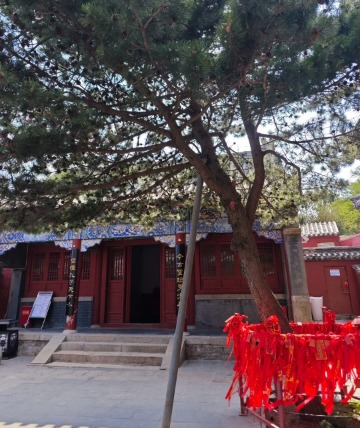
Confucius Temple (孔子庙)
The Confucius Temple is located on Tianjie Street on Mount Tai. It’s a place dedicated to honoring Confucius, and it also houses statues of his disciples, such as Yan Hui, Zeng Zi, Mencius, and Zi Si. Confucius had a strong connection to Taishan Mountain—he visited the mountain multiple times and often referenced it in his teachings.
Who was Confucius? He lived during China’s Spring and Autumn period (770–476 BCE) and was the founder of Confucianism. His ideas became a core part of Chinese traditional culture and moral values. In education, Confucius stressed that learning should be universal and equal, believing that everyone, regardless of their background, should have the opportunity to learn and grow. Politically, he argued that rulers should govern with kindness and compassion, opposing tyranny and dictatorship. Confucius’ influence wasn’t limited to China—it spread to countries like Korea, Japan, and Vietnam, significantly shaping the cultural development of these nations.
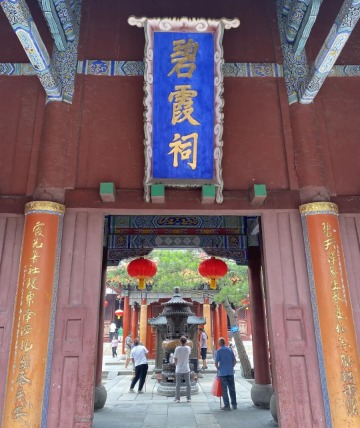
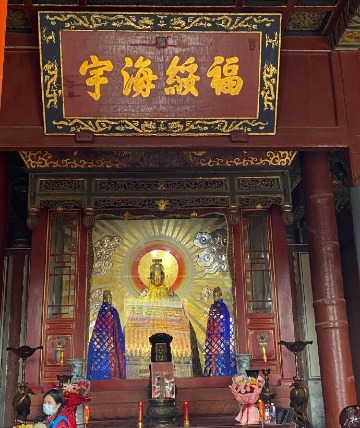
Bixia Temple (碧霞祠)
Bixia Temple is dedicated to the Taoist goddess Bixia Yuanjun, often referred to in local folklore as the “Grandmother of Tai Mount.” She’s believed to protect everything from farming and business to travel and marriage. Every day, countless pilgrims climb Mount Tai just to come here and pay their respects.
In Chinese tradition, the ritual of worshiping deities follows two main stages: making a wish and fulfilling a vow. Making a wish is when a person, facing something they can’t control or handle on their own, prays to a deity for help, hoping for blessings and the realization of their wishes. Fulfilling a vow happens after the wish is granted, when the person keeps their promise to show gratitude and appreciation. Regardless of whether the wish is fulfilled, those who make a vow are expected to honor it, as a sign of sincerity. Ways to fulfill a vow include donating incense money, repairing temples, or restoring golden statues.
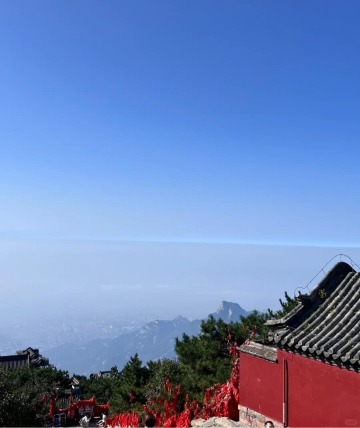
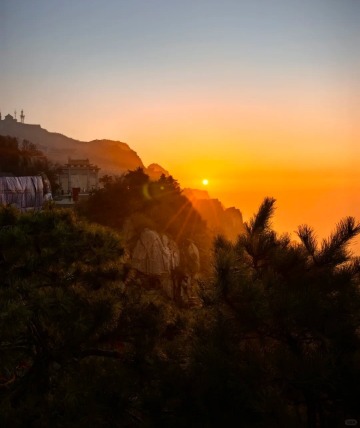
Sun Viewing Peak (日观峰)
After visiting Bixia Temple, head over to Sun Viewing Peak. Located on the eastern side of the main peak of Mount Tai China, it offers one of the best spots to watch the sunrise. During the spring and autumn equinoxes each year, you can witness a breathtaking sunrise here, as the sun rises over the mountain in a truly spectacular display.
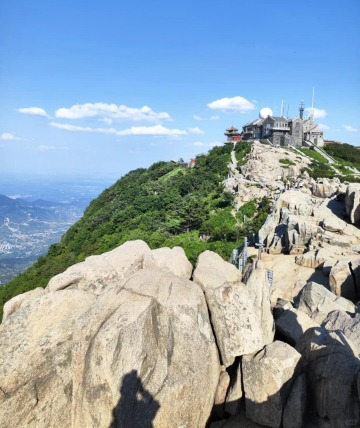
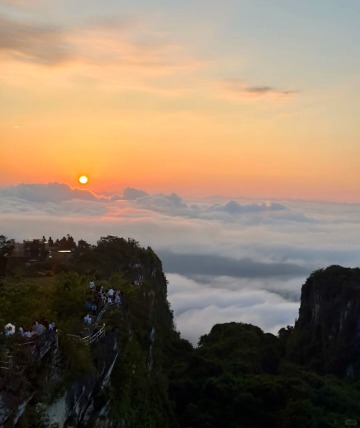
Jade Emperor Peak (玉皇顶)
Jade Emperor Peak is the highest point on Taishan Mountain, standing at an elevation of 1,545 meters. It’s the final destination for climbers. From the peak, you can take in panoramic views of the entire Tai Shan mountain range and the stunning surrounding scenery. The vast sight includes rolling clouds and a sea of mist. At the top, you’ll find the Jade Emperor Temple, which was originally built during the Ming Dynasty. The temple houses a statue of the Jade Emperor, and there’s also an altar used by past emperors for sacrificial rites to honor the heavens.
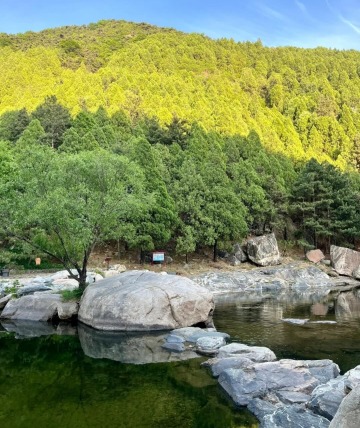
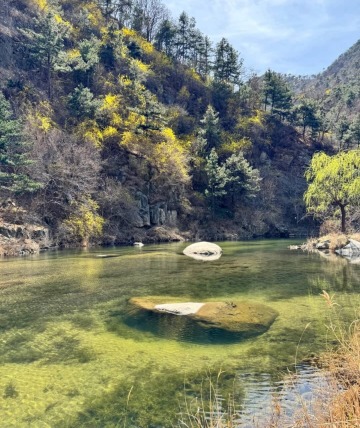
Peach Blossom Land (桃花源)
After climbing Mount Tai Shandong, you can head down to Peach Blossom Land to enjoy the beautiful natural scenery. Located on the western slopes of Tai Mountain, it got its name from the peach blossoms that once filled the valley. The area features geological wonders that are over a billion years old. The stones in the creek are colorful and crystal-clear, and you can even spot the unique Chilin fish swimming in the water—an exclusive species of Mount Tai.
Surrounding Attractions of Mount Tai

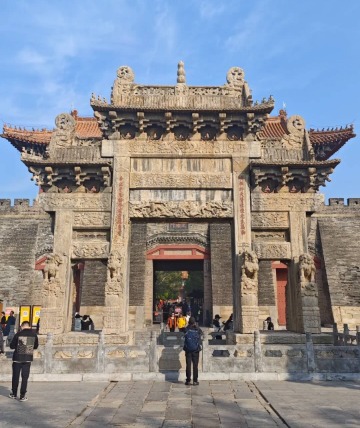
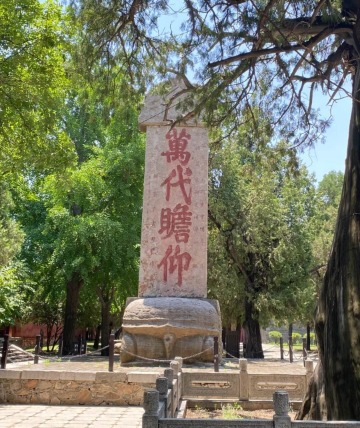

Dai Temple (岱庙)
Located about 1.5 kilometers from Mount Tai, you can reach the north gate of Dai Temple by descending from the Hongmen Gate. The temple was originally built during the Han Dynasty and has been the site of grand sacrificial ceremonies, including the famous Fengshan rites, where emperors performed rituals to honor Mount Tai’s deity. It houses many valuable relics and historical artifacts, such as inscriptions and ancient paintings.
What is the Fengshan Ceremony? The Fengshan Ceremony was a grand sacrificial ritual held by ancient emperors during times of peace and prosperity. By performing these rites, the emperor could use the people’s reverence for nature to highlight his achievements and strengthen his rule.
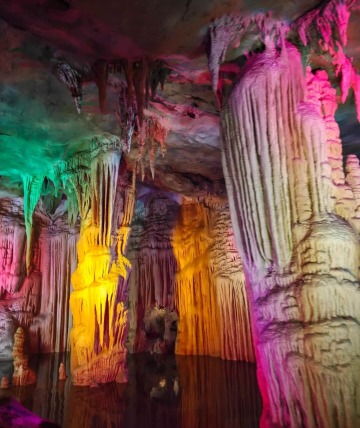

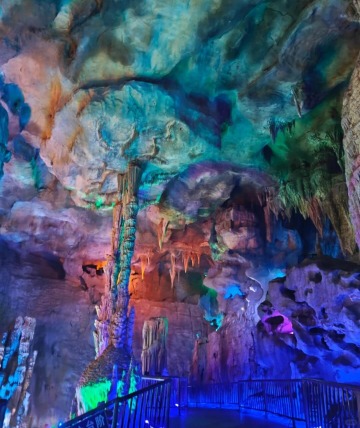
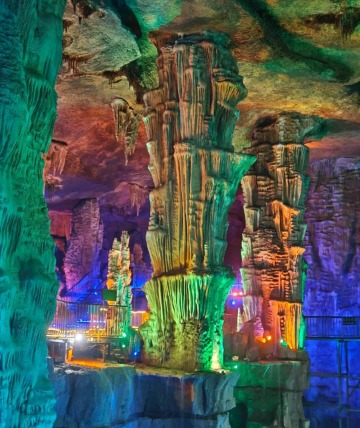
Underground Dragon Palace (地下龙宫)
The Underground Dragon Palace is just 10 kilometers from the foot of Taishan Mountain. Inside, you’ll find a stunning array of stalactites, stone flowers, columns, stalagmites, curtains, and even stone waterfalls. The tour of the cave takes about two and a half hours, and you’ll be treated to breathtaking views of these natural limestone formations.
In addition, there’s a 4,000-meter underground river rafting experience, which was recognized by the Guinness World Records in 2015 as the longest unpowered underground river cave rafting in the world. The waterway twists and turns, offering an exciting and thrilling adventure.
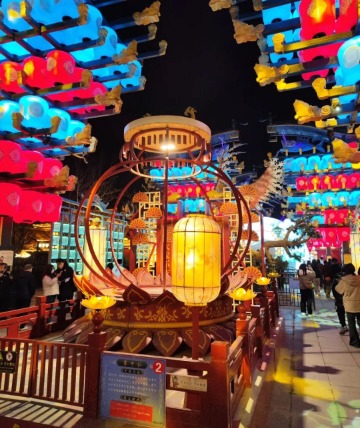
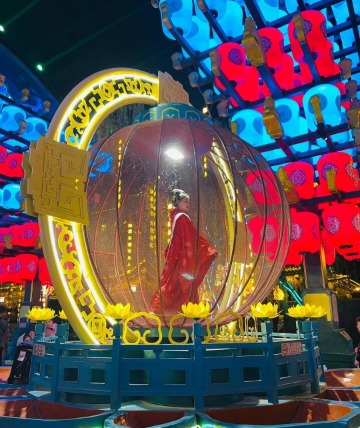
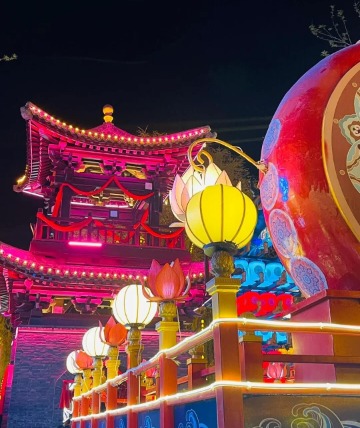
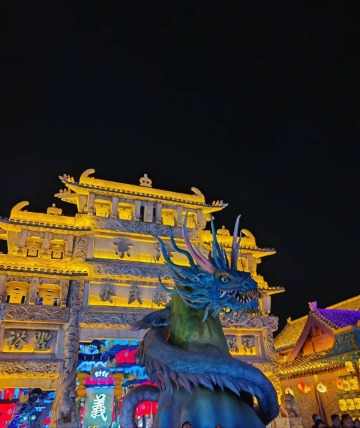
The Song Dynasty Sleepless City (大宋不夜城)
The Song Dynasty Sleepless City is about a 1.5-hour drive from Taishan Mountain. It’s based on the style of China’s Song Dynasty (960–1279) and features unique architecture that replicates the palaces, temples, city walls, and other structures of that time. The park offers a variety of spectacular performances, including court dances, traditional opera, acrobatics, circus acts, and folk music and dance, making visitors feel as if they’ve stepped back into a grand banquet from the Song Dynasty. You can also try your hand at creating traditional Song Dynasty crafts, such as fans, paper, and paper-cutting, and learn about the rich craftsmanship of the era.
Ways to Explore Mount Tai China
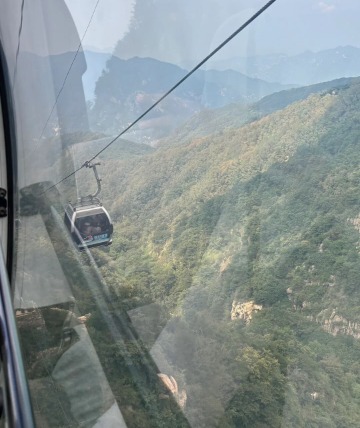
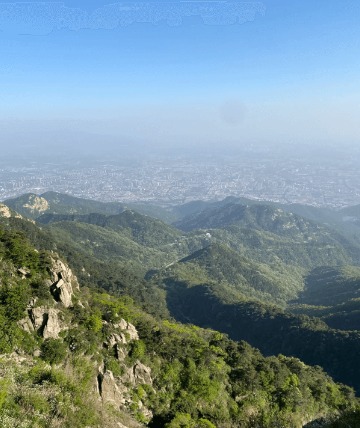
Zhongtian Gate Cable Car (中天门索道)
The Zhongtian Gate Cable Car starts at Zhongtian Gate and ends at Nantian Gate, with a ride time of about 10 minutes. Taking the cable car allows you to skip 1,742 steps and enjoy a panoramic view of Tai Shan Mountain from above. Riding through the sea of clouds makes you feel like you’re entering a fairyland, adding a magical touch to your experience.
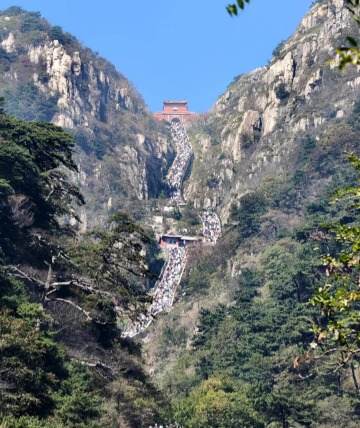
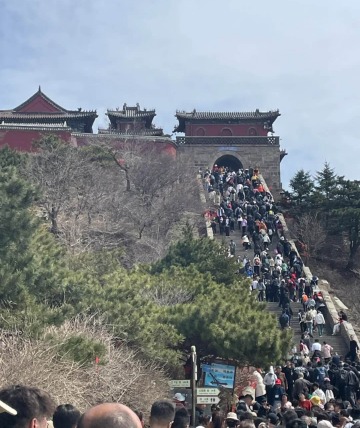
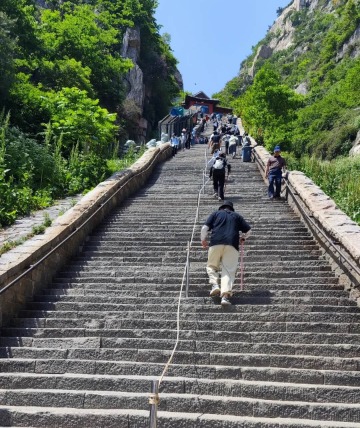
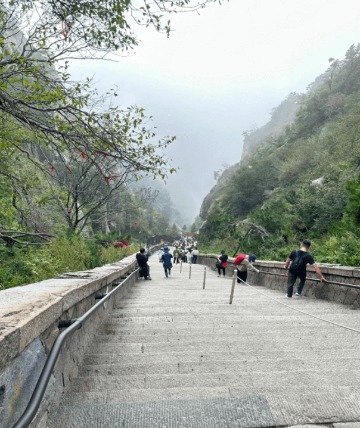
Hiking Mount Tai (徒步泰山)
The Hongmen Route is the most classic hiking trail on Taishan Mountain. Starting at Hongmen, it’s a 9.5-kilometer path with 7,863 steps. The trail is mostly steep with little flat ground, making it perfect for those who enjoy a challenge. Along the way, you’ll be surrounded by dense forests, crystal-clear streams, and dramatic rock formations. Many hikers say the climb is tough, but the sense of accomplishment at the summit makes it all worthwhile. It’s recommended to travel light, take small sips of water, and use your hips to power up the steps to reduce fatigue.
Performances at Taishan Mountain
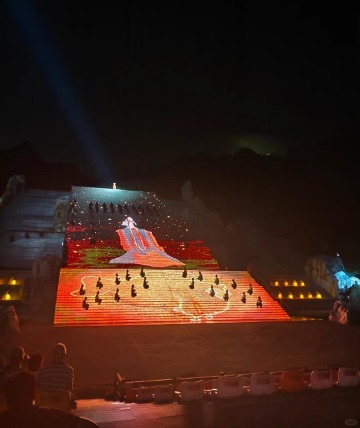
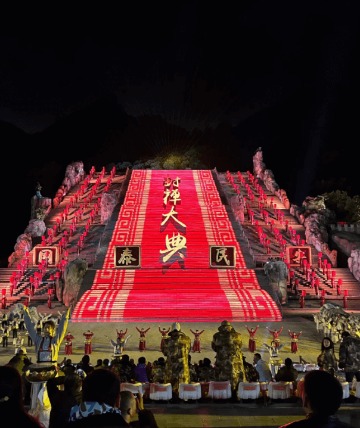
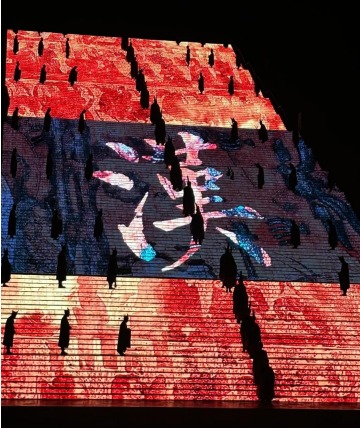
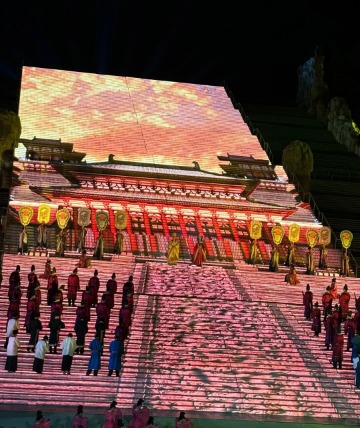
The Ceremony of Fengshan (封禅大典)
This performance takes place near Mount Taishan China and starts every evening at 8:00 PM, lasting about 80 minutes. It’s based on the Fengshan ceremonies from five dynasties: Qin, Han, Tang, Song, and Qing. Each dynasty has its own incredible show. The Fengshan ceremony was an ancient ritual where emperors, when the country was prosperous and the people were at peace, would offer sacrifices to Heaven and Earth.
The best way to experience the Ceremony of Fengshan is by booking your tickets a day in advance to get a good seat. Even though the venue is at the foot of Tai Shan Mountain, it’s about a 30-minute drive from Hongmen, so make sure to plan your transportation ahead of time.
Competitions at Mount Tai
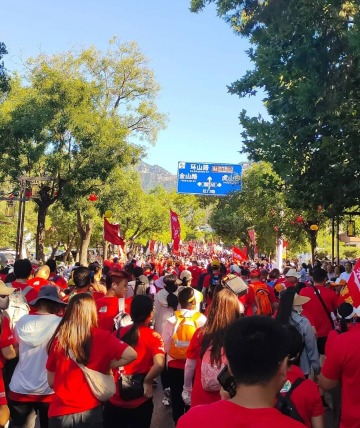
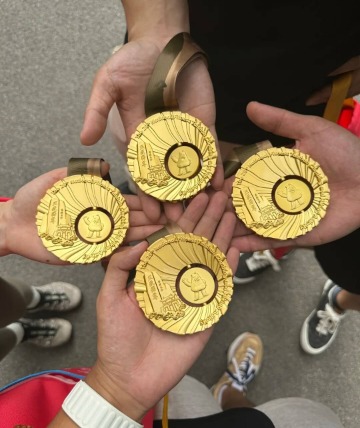
Mount Tai International Climbing Festival (泰山国际登山节)
The Mount Tai International Climbing Festival usually kicks off every September. Since its first event in 1987, it’s been held 38 times. The festival typically features over 2,000 professional runners from both China and abroad, along with thousands of sports enthusiasts joining in the fun.
Accommodation at Mount Tai Shandong
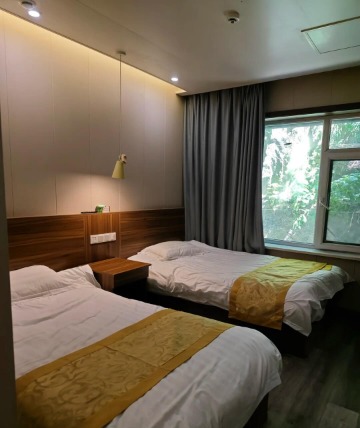

There are a few hotels at the top of Mount Tai where you can spend the night. However, because of the location, prices are usually quite high, and the facilities tend to be a bit outdated. For those who don’t stay at the summit hotels, many visitors opt to rent tents or bring their own sleeping bags to camp outdoors, waking up early to catch the stunning sunrise over Mount Taishan China.
FAQs About Mount Tai
1. Where is Mount Tai?
Mount Tai is located in central Shandong Province, in the city of Tai’an, which is in northern China.
2. Why is Mount Tai famous?
China has five famous mountains: Mount Tai, Mount Hua, Mount Heng, Mount Hengshan, and Mount Song. Among them, Mount Tai is known as the “Head of the Five Sacred Mountains” (五岳之首). Why? Because since ancient times, Tai Shan Mountains has been a key site for imperial ceremonies where emperors worshiped Heaven and Earth. Thirteen emperors made pilgrimages to Mount Tai, making it a symbol of national strength and political stability.
3. How long does it take to climb Mount Tai?
Professional climbers may finish in just over an hour, but for those with less stamina, it can take anywhere from 5 to 8 hours.
4. Why is Mount Tai associated with Confucianism, Buddhism, and Taoism?
Confucianism: Confucius, the most famous Confucian figure, left many marks on Mount Taishan China. Over the centuries, many Confucian scholars also visited the mountain to worship and honor Confucius, leaving behind inscriptions and poems expressing Confucian ideas.
Buddhism: Buddhist culture spread to Mount Tai as early as the Eastern Han Dynasty when Buddhism first entered China. To gain influence, Buddhist followers linked their deities with the local belief that Mount Tai controlled spirits, helping Buddhism take root here. Buddhist temples, such as Lingyan Temple, Yuxuan Temple, and Puzhao Temple, were built, and the Diamond Sutra was carved in the rocks, further promoting Buddhism on the mountain.
Taoism: In Taoism, Mount Tai Shandong is regarded as a home for immortals and an ideal place for Taoist practitioners. Its importance in Taoist culture is reflected in how it has been revered by emperors throughout history, especially during the Tang Dynasty when emperors revered Laozi as an ancestor and promoted Taoism. They built the Daiyue Temple on Mount Tai, further strengthening Taoism’s presence there.
How to Get to Tai Shan Mountain
Tai’an Station: This is the closest train station to Mount Tai, where you can catch a regular train directly. From Tai’an Station, take Bus 11 to the Tai Mountain Scenic Area—it’s very convenient!
Tai’an High-Speed Railway Station: This is the main station for high-speed trains and bullet trains, but it’s a bit farther from Tai Shan Mountains. From here, you can take a bus directly to the scenic area, which takes about an hour, or take a taxi, which takes around 30 minutes.
By Air: Tai’an doesn’t have an airport, so the best option is to fly into Jinan Yaoqiang Airport. From there, take an airport shuttle to Jinan Station, then transfer to a bullet train to Tai’an Station. If your budget allows, you can also take a taxi directly from the airport to the foot of Taishan Mountain.
Hours & Fees
Hours
Daily from 5:00 AM to 11:00 PM
Time Required
2-3 days (since hiking up Mount Tai takes 4-8 hours)
Fees
115 CNY (approximately 16 USD) per person
Practical Tips
You don’t need to bring too much water or food for the hike. There are plenty of shops on Taishan Mountain, and the prices are very reasonable.
The temperature at the summit can be chilly, so it’s a good idea to bring a light jacket and a hat.
Be sure to check the weather forecast in advance. You’ll need clear skies to catch the sunrise, but if it’s cloudy or rainy, you can enjoy the sea of clouds instead.
Wear warm, anti-slip hiking shoes, preferably with deep tread and waterproof features, to handle any icy or snowy patches on the trail.
If you have the time, I recommend spending 2 days and 1 night to enjoy the mountain at a leisurely pace. Hike up slowly on the first day, stay overnight at Nantian Gate for a good rest. The next morning, if the weather’s good, you can catch the sunrise and then take your time exploring the Heavenly Street and Yuhuangding. In the afternoon, head back down. Just make sure to pack lightly for your overnight stay—don’t bring heavy items, or you’ll be tired carrying them up the mountain.




